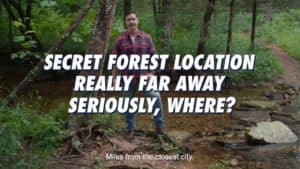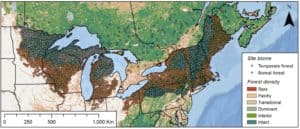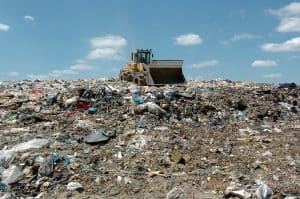I always like it when seemingly unusual combinations of people agree. Here’s an NY Times story. Their headline is a little different from mine (it’s an economic reporter in the economy section).
Nature Has Value. Could We Literally Invest in It?
“Natural asset companies” would put a market price on improving ecosystems, rather than on destroying them.
We’ve discussed this before.. what could go wrong with the financial industry getting involved in land management? They’ve done so well with the mortgage industry. And at that time, their regulators were either in bed with the regulated, and/or asleep at the wheel. But since they apologized and paid everyone back, we should give them a second chance. They didn’t?
If there are willing buyers and sellers, conceivably the buyers could get more from selling ecosystem services without folks at financial markets taking their cut. It’s interesting that in the first few paragraphs, it’s characterized as “right-wing groups and R politicians are against it and “even” conservationists wary of Wall Street. Note also that Mr. Eger has the chance to respond to concerns in the article; it’s interesting to see who has a chance to respond and how far the back and forth goes. Also the public lands question isn’t mentioned, which I think caused the concern of western R’s.
Picture this: You own a few hundred acres near a growing town that your family has been farming for generations. Turning a profit has gotten harder, and none of your children want to take it over. You don’t want to sell the land; you love the open space, the flora and fauna it hosts. But offers from developers who would turn it into subdivisions or strip malls seem increasingly tempting.
One day, a land broker mentions an idea. How about granting a long-term lease to a company that values your property for the same reasons you do: long walks through tall grass, the calls of migrating birds, the way it keeps the air and water clean.
It sounds like a scam. Or charity. In fact, it’s an approach backed by hardheaded investors who think nature has an intrinsic value that can provide them with a return down the road — and in the meantime, they would be happy to hold shares of the new company on their balance sheets.
Such a company doesn’t yet exist. But the idea has gained traction among environmentalists, money managers and philanthropists who believe that nature won’t be adequately protected unless it is assigned a value in the market — whether or not that asset generates dividends through a monetizable use.
The concept almost hit the big time when the Securities and Exchange Commission was considering a proposal from the New York Stock Exchange to list these “natural asset companies” for public trading. But after a wave of fierce opposition from right-wing groups and Republican politicians, and even conservationists wary of Wall Street, in mid-January the exchange pulled the plug.
That doesn’t mean natural asset companies are going away; their proponents are working on prototypes in the private markets to build out the model. And even if this concept doesn’t take off, it’s part of a larger movement motivated by the belief that if natural riches are to be preserved, they must have a price.
*********
A scam with the best of intentions for using the money is still.. a scam. Was the SBF trial so long ago?
So in 2017, Mr. Eger founded the Intrinsic Exchange Group with the goal of incubating natural asset companies, NACs for short. Here’s how it works: A landowner, whether a farmer or a government entity, works with investors to create a NAC that licenses the rights to the ecosystem services the land produces. If the company is listed on an exchange, the proceeds from the public offering of shares would provide the landowner with a revenue stream and pay for enhancing natural benefits, like havens for threatened species or a revitalized farming operation that heals the land rather than leaching it dry.
If all goes according to plan, investments in the company would appreciate as environmental quality improves or demand for natural assets increases, yielding a return years down the road — not unlike art, or gold or even cryptocurrency.
*********
Unexpected Headwinds
Mr. Eger was dismayed. The most powerful forces arrayed against natural asset companies were people who wanted land to remain available for uses like coal mining and oil drilling, a fundamental disagreement about what’s good for the world.
OK, well for sure I’m not a powerful force. But are we willing to take Mr. Eger’s word for the “forces arrayed against” the idea? Might they have interviewed one of the R politicians for example?
But opponents also made spurious arguments about the risks of his plan, Mr. Eger said. Landowners would decide whether and how to set up a NAC, and existing laws still applied. What’s more, foreign governments can and do buy up large tracts of land directly; a license to the land’s ecological performance rights would create no new dangers.
There is also pushback, however, from people who strongly believe in protecting natural resources, and worry that monetizing the benefits would further enrich the wealthy without reliably delivering the promised environmental upside.
“If investors want to pay a landowner to improve their soil or protect a wetland, that’s great,” said Ben Cushing, the director of the Sierra Club’s Fossil-Free Finance campaign. “I think we’ve seen that when that is turned into a financial asset that has a whole secondary market attached to it, it creates a lot of distortions.” Another environmental group, Save the World’s Rivers, filed a comment opposing the plan partly because it said the valuation framework centered on nature’s use to humans, rather than other living things.
To Debbie Dekleva, who lives in Ogallala, Neb., the prospect that a natural asset company could enroll large tracts of land seems like a very real threat. For 36 years, her family has worked to commercialize milkweed, a wild plant that produces a strong fiber and is the only thing that the caterpillars of imperiled monarch butterflies will eat. Ms. Dekleva pays local residents to collect the pods from milkweed stands with permission from friendly landowners, and then processes them into insulation, cloth and other products.
That sounds like a type of business that might contribute to a NAC’s value. But Ms. Dekleva suspects that she wouldn’t be part of it — faraway investors and big companies might lock up the rights to milkweed on surrounding land, making it harder for her to operate.
“I think that whoever writes the rules wins,” Ms. Dekleva said. “So let’s say Bayer is doing regenerative agriculture, and they’re going to say, ‘And now we get these biodiversity credits, and we get this, and we get this, and we get this.’ How does someone like me compete with something like that?”
Such opposition — the kind that stems from deep skepticism about financial products that are marketed as solving problems through capitalism, and questions about who is entitled to nature’s gifts — may be hard to dislodge.
Maybe, just maybe, this isn’t really an R/D breakdown.. remember Occupy Wall Street? Also I think PERC is fairly pro.
Mr. Eger said he built safeguards into the proposed rule to guard against concerns like Ms. Dekleva’s. For example, each company’s charter is supposed to include an “equitable benefit sharing policy” that provides for the well-being of local residents and businesses.
It sounds like “trust us, things will be swell.” Trust is a function of transparency and accountability for Wall Street, just as much as for wildfire practitioners.
For now, Intrinsic will seek to prove the concept in the private markets. The company declined to disclose the parties involved before the deals are closed, but identified a few projects that are close. One is attached to 1.6 million acres owned by a North American tribal entity. Another plans to enroll soybean farms and shift them to more sustainable practices, with investment from a consumer packaged goods company that will buy the crop. (The pilot project in Costa Rica, which Intrinsic envisioned as covering a national park in need of funding to prevent incursions from arsonists and poachers, stalled when a new political party came to power.)
And the concept remains attractive to some landowners who’ve managed to wrap their heads around it. Take Keith Nantz, a cattle rancher who has been trying to build a vertically integrated, sustainable beef operation across the Pacific Northwest. He and a few partners would like to move to less chemically intensive grazing practices, but banks are hesitant to lend on a project that could reduce yields or jeopardize crop insurance coverage.
A natural asset company could be a piece of his financing puzzle. And to Mr. Nantz, the opposition comes mostly from a place of fear.
“There’s nothing being forced by a government or state or organization to be a part of this or not,” he said. “We can choose to be a part of this, and hopefully it’s a great opportunity to bring some capital.”
Again, the public land part is not mentioned. This seems like an unusual oversight for the reporting.
(The pilot project in Costa Rica, which Intrinsic envisioned as covering a national park in need of funding to prevent incursions from arsonists and poachers, stalled when a new political party came to power.)
Why don’t people just give the park money to prevent incursions (hire people to do a potentially dangerous job)? Why does it need to go through a complex financial instrument with intermediaries getting their cut? It seems to me that, generally, the history of complex financial instruments has not been good.




